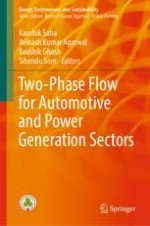This book focuses on the two-phase flow problems relevant in the automotive and power generation sectors. It includes fundamental studies on liquid–gas two-phase interactions, nucleate and film boiling, condensation, cavitation, suspension flows as well as the latest developments in the field of two-phase problems pertaining to power generation systems. It also discusses the latest analytical, numerical and experimental techniques for investigating the role of two-phase flows in performance analysis of devices like combustion engines, gas turbines, nuclear reactors and fuel cells. The wide scope of applications of this topic makes this book of interest to researchers and professionals alike.
